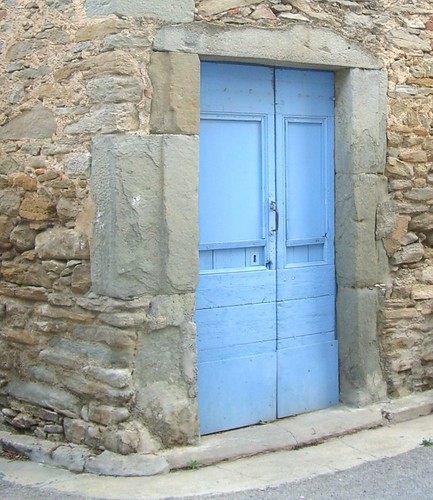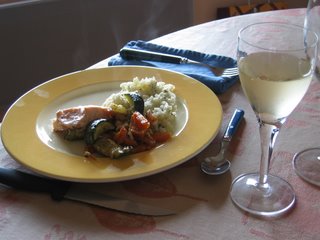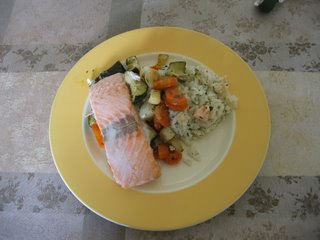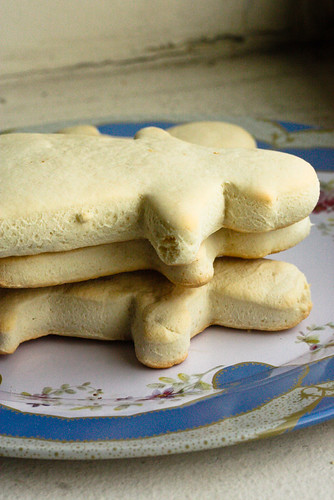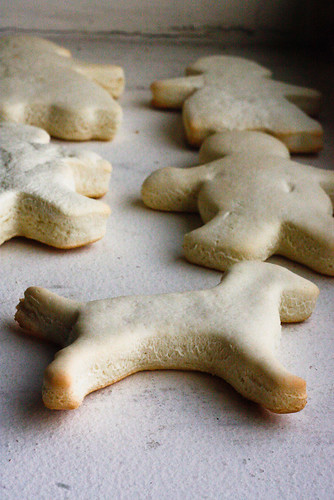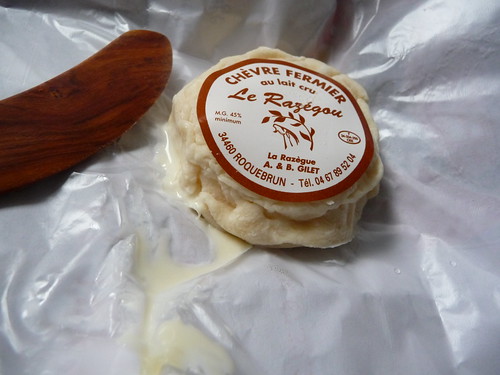
These little treasures are the best thing anyone ever invented. Just my opinion, of course! In the region of Brittany here in France, they've practically made an art out of making
caramel au beurre salé et fleur de sel, as they're called in french
. The
vrai (real)
fleur de sel de Guerande comes from the region also, so it was inevitable that someone thought of adding salt to this sweet concoction.
Sucré-salé...sweet-salty, oh what a combination.

I've bought many little boxes of these candies, shared a few along the way....and finally decided to take a crack at making them myself. I don't know what took me so long. It's not really complicated: there are only 5 ingredients (sugar, fleur de sel, crème fraîche, vanilla bean, & salted butter). As for tools, you need a good thermometer, a high temperature spatula & a good cooking pan with high sides.
However, there is one part that's tricky: working with caramalizing, hot sugar at intensely high temperature. Warning! This can be dangerous. But it's certainly manageable if you're careful. You do need to have a cooking pan with high sides so that when you add the cream to the hot caramel, it will not bubble over all over the place....potentially burning you. Instead, all of that hot gooey-ness will stay safely inside your pan!
So, with that little disclaimer in mind, here's the recipe:
 Ingredients:
Ingredients:80 g creme (whole fat please!)
1 vanilla bean
250 g sugar
80 g salted butter cut into cubes
2 g fleur de sel
Method:1. Mis-en-place: weigh out all ingredients, cut vanilla bean in half & scrape off grains with a knife. Get a pan or something ready to put the cooked caramel in (for the last step; below). I used a 9x6 loaf pan. Line it with parchment paper. Or, use a square mold & put parchment paper underneath. Oil sides first if using a metal mold.
2. Caramelize the sugar: put 1/3 of the sugar in a pot that conducts heat well (copper if you have it...), but above all else, make sure the sides are high!! Heat the sugar (dry) until it turns a light brown color & then stir until all sugar is melted. You need to be using a heat-resistant spatula or wooden spoon. Add the next 1/3 quantity of sugar - keep stirring. Make sure the sugar is melted & then add the remaining sugar. Stir. The color will be a nice caramel color. Use a thermometer to monitor the temperature. When it reaches 180°C (356°F), stir in the vanilla bean grains. While you are waiting for the temperature to reach 180°C, heat the cream until it just reaches a boil (don't let it keep boiling). Set a side. (Alternatively, you can heat the cream before you start caramelizing the sugar.)
3. Finish it off: After adding the vanilla bean, add the heated cream & stir. Careful here! When I did this part, it bubbled all-out-of-control-like. A little scary at first, I'll admit. Continue stirring & when temperature drops to 140°C (284°F), remove from stove & stir in butter. Add the fleur de sel & stir.
 4. Pour & let set:
4. Pour & let set: Pour caramel into whatever you're using. Let it sit at room temperature 2 hours. Once hardened, remove from form and cut into individual pieces. Wrap in wax paper or
papier de bons bons.
 Note:
Note: Next time, I'll try to cook the caramel a little less so that the color is a little lighter....but the flavor is still good, I can assure you!
Voila! Wish I could share some with you.
